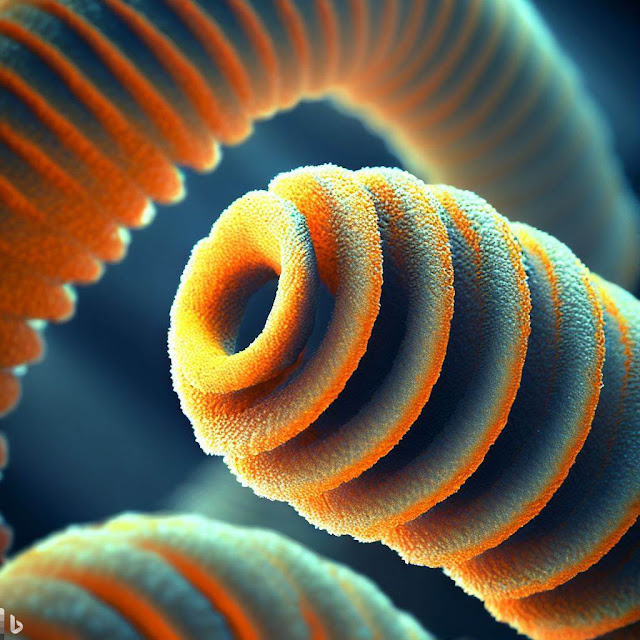Virus Structure
Viruses are neither plant, animals, nor microbes, but they are the living world's most common parasites. Viruses, despite appearing to be alive entities due to their extraordinary reproductive ability, are not in the strictest sense of the word.
Viruses cannot carry out their life-sustaining operations or proliferate without a host cell. Because they lack ribosomes, they cannot make proteins and must rely on the ribosomes of their hosts to transcribe viral messenger RNA into viral proteins. Viruses cannot make or store adenosine triphosphate (ATP), so they must rely on the host cell for energy and all other metabolic processes.They also feed on basic building ingredients such amino acids, nucleotides, and lipids (fats). Although viruses have been proposed as a kind of protolife, their inability to persist in the absence of living beings makes it exceedingly unlikely that they existed prior to cellular life during Earth's early existence. According to some experts, viruses evolved from renegade pieces of genetic code that adapted to a parasitic existence.
Nucleic acid, either DNA or RNA (but not both), and a protein coat that encases the nucleic acid are found in all viruses. Some viruses are also encased in a fat and protein molecular envelope. A viral particle is called a virion when it is infective and outside the cell. Each virion has at least one distinct protein that is produced by individual genes in its nucleic acid. Viroids (meaning "viruslike") are pathogenic creatures that are made up entirely of nucleic acid and lack structural proteins. Other virus-like particles known as prions are generally made up of a protein that is firmly interwoven with a tiny nucleic acid molecule.
Viruses are often categorized according to the creatures they infect, which can be animals, plants, or microbes. Because viruses cannot pass through plant cell walls, almost all plant viruses are spread by insects or other creatures that feed on plants. Certain bacterial viruses, such as the T4 bacteriophage, have evolved a complex infection process. The virus has a "tail" that it connects to the surface of the bacteria using proteinaceous "pins". The tail contracts, and the tail plug enters the cell through the cell wall and underlying membrane, injecting the viral nucleic acids. Viruses are divided into families and genera based on three structural factors: 1) the kind and size of their nucleic acid, 2) the size and shape of the capsid, and 3) the presence of a lipid envelope enclosing the nucleocapsid (capsid-encased nucleic acid).
Viruses are primarily divided into two types of shapes: rods or filaments and spheres. The rod shape is caused by the linear array of nucleic acid and protein subunits that comprise the capsid. The sphere shape is actually a polygon with 20 sides (icosahedron).
Viruses were not fully known until the twentieth century, but their impacts had been recognized for centuries. In the late eighteenth century, British physician Edward Jenner discovered the theory of inoculation after observing that people who got the mild cowpox disease were often immune to the deadlier smallpox sickness. By the late nineteenth century, scientists recognized that some agent was causing a disease in tobacco plants, but that it would not grow on artificial media (like bacteria) and was too small to be seen under a light microscope. In the twentieth century, advances in live cell culture and microscopy enabled scientists to discover viruses. Genetic advances have significantly enhanced the identifying process.
Here are the main components of a virus structure:
Genetic Material:
Capsid -
Envelope -
Some viruses have an outer envelope composed of lipids (fats) that surrounds the capsid. This envelope is usually derived from the host cell's membrane during the process of virus assembly and budding from the host cell.
Nucleic Acid -
Just like in cells, the nucleic acid of each virus encodes the genetic information required for protein synthesis. While double-stranded DNA is responsible for this in prokaryotic and eukaryotic cells, DNA is only used by a few viruses. Most viruses keep all of their genetic information in single-stranded RNA.
There are two kinds of RNA viruses. Most people refer to genomic RNA as a plus strand because it serves as messenger RNA for direct synthesis (translation) of viral protein. However, a few have negative RNA strands. In these circumstances, the virion contains an enzyme known as RNA-dependent RNA polymerase (transcriptase), which must first catalyze the generation of complementary messenger RNA from the virion genomic RNA before viral protein synthesis can take place.
















Thank you so much.
ReplyDelete